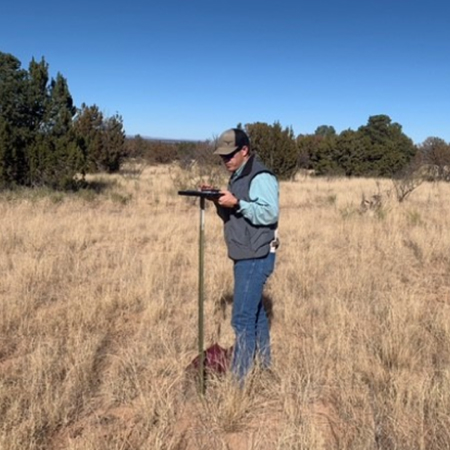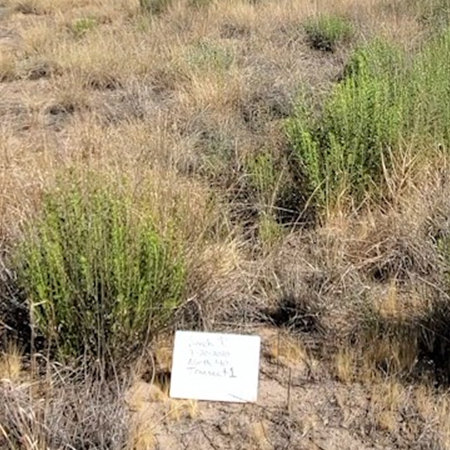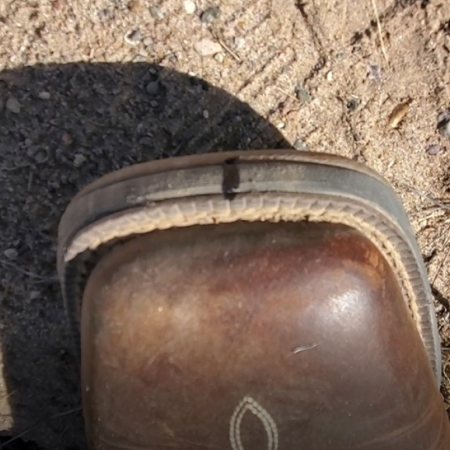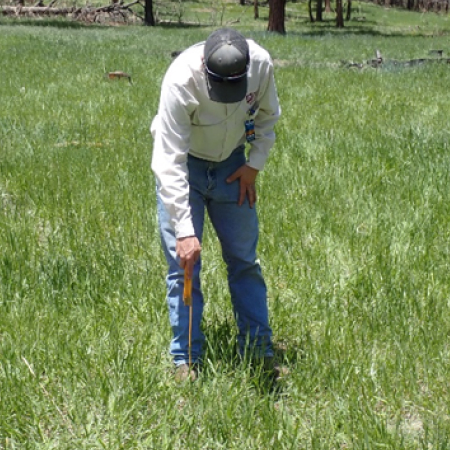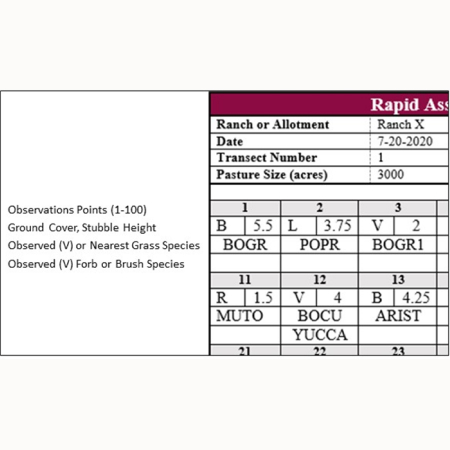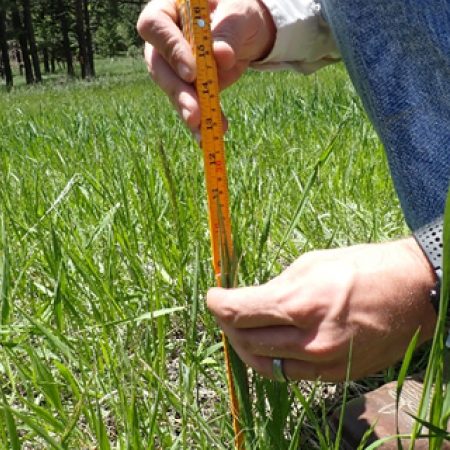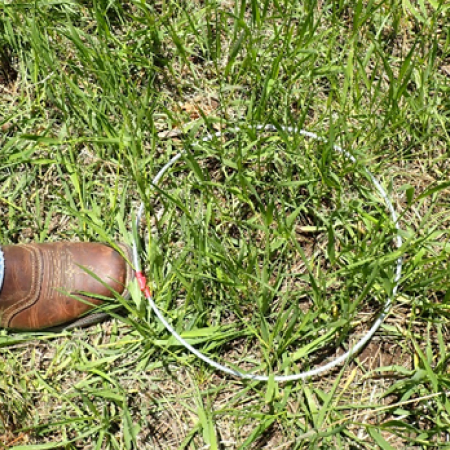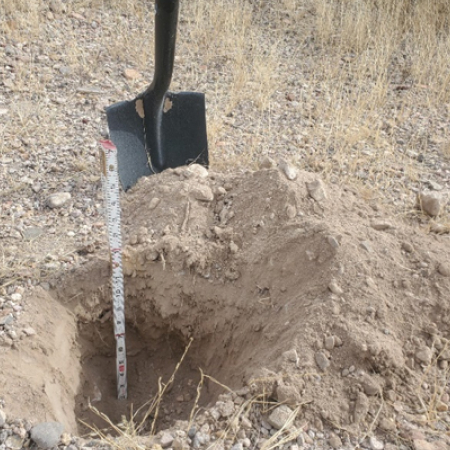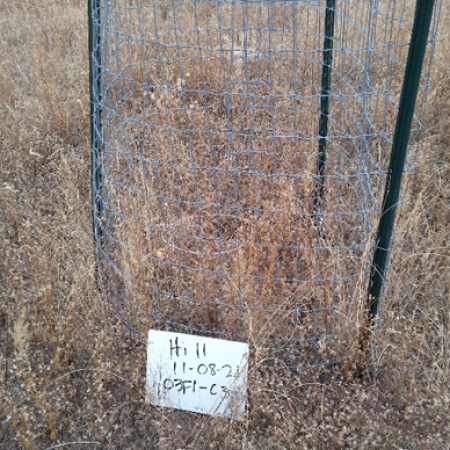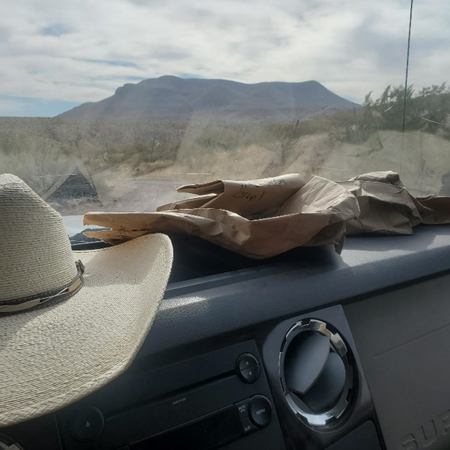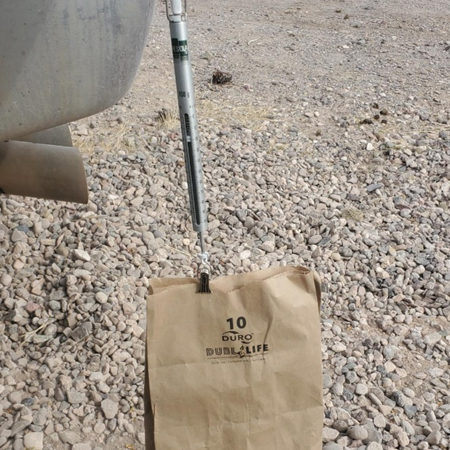Why Monitor
Land managers are entrusted with the stewardship of the land, ensuring its sustained function. Monitoring is crucial for understanding and managing rangelands. By regularly assessing rangeland conditions, potential issues from grazing, invasive species encroachment, or habitat degradation can be identified. The data collected provides support for good land management and informs decisions regarding land use planning, conservation initiatives, and restoration efforts. Additionally, monitoring helps assess land productivity and resilience, directly impacting agricultural production, food security, and the livelihoods of rural communities. Overall, monitoring is essential for understanding rangelands, guiding sustainable use practices, promoting biodiversity, addressing climate change, and making informed management decisions.
What Method to Use
A variety of monitoring methods exist to collect rangeland data, but are often complex and labor intensive. Visual assessments are the most common method of monitoring due to their simplicity and speed but lack precision and repeatability. Other quantitative methods can be used to bolster visual assessments and provide objective, unbiased, repeatable scientific information but are often intensive. To help producers save time and encourage monitoring, the Range Improvement Task Force with New Mexico State University developed a robust quantitative assessment; the Rapid Assessment Methodology (RAM). This technique quantifies surface cover, species composition, stubble height, available forage, annual production, and relative animal visitations using a step-point transect, while also documenting visual assessments through photos. Altogether, the information can be used to make informed, science-based management decisions.
Definitions:
- Exclusion cage:
A structure used to temporarily fence an area within a pasture to prevent livestock and wildlife from foraging; used to assess annual forage production; cages should be established prior to the start of grazing season; sampling should occur at the end of the growing season. - Forage sampling hoop:
Circular hoop of known size used to sample forage clippings. - Growing season:
In temperate climates, that portion of the year when temperature and moisture permit plant growth. In tropical climates it is determined by availability of moisture. - Key Area:
A relatively small portion of a range selected because of its location, use or grazing value as a monitoring point for grazing use. It is assumed that key areas, if properly selected, will reflect the overall acceptability of current grazing management over the range. - Pellet group:
Animal fecal pellets of about the same size, shape and age with a minimum of 15 pellets representing a single defecation event. - Sampling bags:
Breathable, paper bags that allow for vegetation to dry without molding. - Standing crop:
The total amount of plant material per unit of space at a given time. - Transect:
Path between two points where measurements are taken at specified intervals. A step-point transect uses the length of a pace as the interval, whereas a belt transect uses a rectangular area centered on the transect path, and measures all items of interest (e.g., fecal droppings, rare plants) within the rectangular area.
Field Supplies for Monitoring
| Photo-points |
Transect data |
Forage collection |
| Dry erase board |
GPS unit (or steel post) |
Sampling hoop of known size |
| Dry erase marker |
Clipboard |
Forage clippers or scissors |
| Camera |
RAM datasheet |
Paper forage collection bag |
| 6 ft. carpenter ruler |
Pencil(s) |
Permanent marker |
Where to Monitor
- Select a key area for assessment that, due to location, plant community, soil characteristics, grazing/browsing value, and/or use, serves as an indicative sample of forage production, trend, or degree of use by animals within the range unit.
- The total size of the range unit that the key area represents should be greater than five acres.
- Avoid livestock and wildlife congregation and travel areas (i.e., roads, fences, supplementation sites and watering locations).
- Slopes should be less than 15 percent.
- Key areas should be a quarter to one mile from watering locations.
When to Monitor
- In autumn at the conclusion of the growing season to estimate forage production and document grazing management outcomes.
- Repeat annually during same time period to create a baseline to estimate long-term trends.
- Additionally, any time of the year, to make adaptive or short-term management decisions.
Monitoring Data Collection Steps
- Mark transect starting point with a t-post (or something similar; Fig. 1) and record location
coordinates on datasheet (see Appendix A) from a global positioning system (GPS).
- Record cardinal direction or compass heading of transect on datasheet.
- Record information that provides distinct monitoring identity on datasheet.
- Ranch or allotment name.
- Pasture name.
- Date (including year).
- Transect number.
-
Take photo-points (Fig. 2-3).
- Use a whiteboard to display specific information (e.g., date, pasture, transect number, heading,
etc.)
- Take landscape photo (with whiteboard) in the direction of transect. Include a landmark (i.e., rock,
hill, or outcrop) in the photo so the same photo location can be used each year.
- Take ground-level photo on transect at least 10 feet from starting point (with whiteboard and
ruler).
- Mark point of preferred boot for the step-point transect assessment (Fig. 4-5).
- Record monitoring data (Fig. 6) at every pace (i.e., two steps; usually about five feet in distance) as
determined by the fall of the marked boot tip (also called a “hit” point); repeat for 100 points; do not
look down when pacing to avoid selection bias.
-
Record ground cover classification at each hit.
- V for vegetation
- L for litter
- R for rock.
- B for bare ground/soil.
-
Record plant species by common name or abbreviation.
- For a grass vegetation hit, record grass species.
- For non-vegetation hit, record nearest grass species.
- For non-grass vegetation hit, record non-grass species and nearest grass species.
-
Record stubble height of grass species (Fig. 7).
- Using a ruler, measure vertical leaf length from stem base to the nearest half inch of average
leaf length of the majority of leaf blades. For plants less than two inches, record length to the
nearest quarter inch.
-
Collect a standing crop sample at every 20th hit for five total samples (Fig. 8).
- After recording data (a-c) place a sampling hoop (or quadrant) at tip of boot.
- Clip all livestock forage (i.e., grass) within hoop to ground level.
- Place clipped forage in labeled sampling bag (include date, pasture, transect, and sample
number)
-
Walk back to transect starting point recording animal fecal droppings/pellet groups (dot tally) using a
six-foot belt transect approach (i.e., three-feet on either side of transect); remove, destroy, or mark
pellets with spray paint so as not to re-sample in subsequent monitoring.
- Dig a 12-inch soil pit adjacent to transect starting point and record depth of soil moisture in inches
(Fig. 9).
-
Sample a minimum of three grazing exclusion cages (Fig. 10).
- Place sampling hoop in the center of each cage.
- Clip all grass forage within the hoop to the plant crown and place in labeled sampling bag.
- Move cage at least 30-feet from current location for subsequent sampling year.
-
Dry standing crop and exclusion cage forage samples.
- Use a low temperature (less than 140° F) drying oven and dry bags for 24 hours.
- Alternatively, place bags on vehicle dashboard in direct sunlight (Fig. 11) until forage is
completely dry (~48 hours).
- Determine forage sample mass; weigh sample plus bag, subtract bag mass, record sample mass in grams
for each clipping or sample (Fig. 12).
-
Find the conversion factor (Table 1) from sample hoop size used to convert grams of collected sample to
pounds of forage per acre; record conversion factor on datasheet.
- To estimate standing crop from dried forage samples, add all transect samples together, if not
already combined, and divide by five. The same is done for exclusion cage samples but dividing by
three. Multiply the resulting quotient by the appropriate conversion factor (Table 1; e.g., for a 0.96
ft2 sampling hoop the conversion coefficient is 100).
Figures
Figure 1. Marking the transect starting point with a T-post and recording GPS coordinates.
Figure 2. A landscape photo-point taken in the direction of the transect.
Figure 3. A ground-level photo-point.
Figure 4. Marked boot tip for determining step-point transect measurements.
Figure 5. Step-point transect; taking a measurement point from the mark on the boot tip.
Figure 6. Sample data sheet demonstrating the placement (clockwise from upper left of each observation point cell group) of ground cover type, stubble height, and nearest plant species. For example, point 12 was a yucca (YUCCA) basal vegetation hit (V), and sideoats grama (BOCU) was the nearest forage plant for which a stubble height measurement (4 inches) was taken.
Figure 7. Measuring stubble height by extending leaves vertically.
Figure 8. Placed standing crop sampling hoop (0.96 ft2 in area) for forage collection.
Figure 9. Twelve-inch soil pit to assess soil moisture depth.
Figure 10. Grazing exclusion cage (10.75 ft2 in area) with sampling hoop placed in the center for forage collection.
Figure 11. Drying forage samples on a vehicle dashboard in direct sunlight.
Figure 12. Weighing forage sample in grams with bag.
Tables
Table1 - Range sampling conversion factors for circular and square dimensions reported in Pratt and Rasmussen 2001.
| Plot Size |
Conversion Factor (lbs/acre) |
Hoop Radius |
Hoop Circumference |
Square Dimensions |
| 0.96 ft2 |
grams × 100 |
0.55 ft |
3.5 ft |
0.98 × 0.98 ft |
| 1.92 ft2 |
grams × 50 |
0.78 ft |
4.9 ft |
1.39 × 1.39 ft |
| 2.40 ft2 |
grams × 40 |
0.87 ft |
5.5 ft |
1.55 × 1.55 ft |
| 4.80 ft2 |
grams × 20 |
1.24 ft |
7.8 ft |
2.19 × 2.19 ft |
Literature Cited
Allison, C.D., Holechek, J.L., Baker, T.T., Boren, J.C., Ashcroft, N.K., Fowler, J.M., 2007.
Rapid assessment methodology for proactive rangeland management. Rangelands 29, 45–50.
Pratt, M., Rasmussen, G.A., 2001. Calculating available forage.
https://digitalcommons.usu.edu/cgi/viewcontent.cgi?article=1991&context=extension_histall
APPENDIX A
